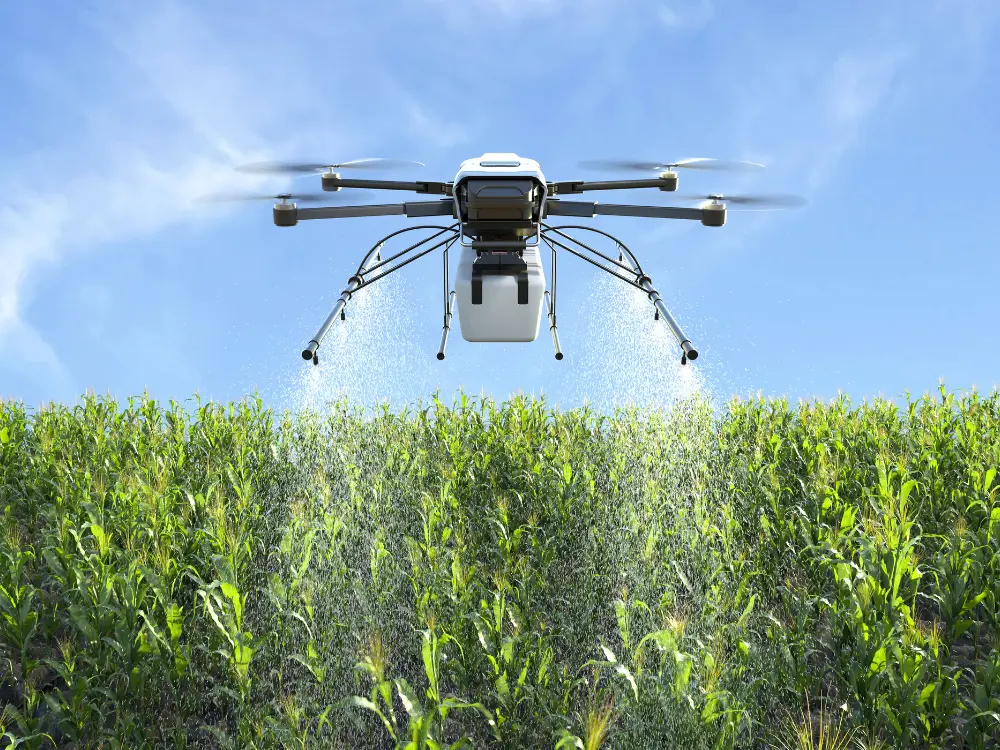In the rapidly evolving landscape of agriculture, drones have emerged as one of the most transformative technologies, revolutionizing the way farming is done. In a country like India, where agriculture is the livelihood of millions, drones are providing farmers with new tools to enhance productivity, efficiency, and sustainability. These unmanned aerial vehicles (UAVs) are not just flying gadgets; they are becoming indispensable in modern farming, offering precise and timely interventions that were previously unimaginable. Let’s explore how drones are changing the face of agriculture in India.
What Are Agricultural Drones?
Agricultural drones are specialized UAVs designed for use in farming. They come equipped with a variety of sensors and cameras that capture high-resolution images and data from the fields. This data is then processed and analyzed to provide insights that help farmers make informed decisions about crop management, irrigation, pest control, and more. Unlike traditional methods, which can be labor-intensive and time-consuming, drones offer a quicker, more accurate, and cost-effective solution.
Key Applications of Drones in Agriculture
1. Crop Monitoring and Health Assessment
One of the most significant uses of drones in agriculture is for monitoring crop health. Drones equipped with multispectral and thermal sensors can capture detailed images that reveal the condition of crops in real-time. These images can detect early signs of stress caused by pests, diseases, or nutrient deficiencies—issues that are often invisible to the naked eye.
With this information, farmers can take prompt action to address problems before they escalate, ensuring healthier crops and higher yields. For instance, drones can help identify areas of a field that are underperforming, allowing for targeted interventions such as spot treatment with fertilizers or pesticides. This precision not only saves time and resources but also reduces the environmental impact of farming.
Example in India: In Punjab, drone technology is being used in wheat and rice fields to monitor crop health, leading to timely interventions that prevent significant yield losses.
2. Precision Agriculture
Precision agriculture is a farming approach that aims to optimize the use of resources such as water, fertilizers, and pesticides. Drones play a crucial role in this by providing detailed data that helps farmers apply these inputs more accurately.
For example, drones can create precise maps of soil variability across a field, allowing farmers to tailor their fertilizer application to the specific needs of different areas. Similarly, drones can monitor irrigation efficiency, ensuring that water is applied only where it is needed, reducing waste and conserving resources.
Example in India: In Maharashtra, precision agriculture using drones has been adopted in vineyards, where water management is critical. Drones help optimize irrigation schedules, resulting in better quality grapes and increased profits.
3. Pest and Disease Management
Drones are also proving invaluable in the fight against pests and diseases. By flying over fields and capturing high-resolution images, drones can identify pest infestations and disease outbreaks early. This allows farmers to apply targeted treatments, such as pesticides or fungicides, only to the affected areas, rather than spraying the entire field.
This targeted approach not only reduces the amount of chemicals used but also minimizes the impact on the environment and non-target species, such as beneficial insects. Moreover, it helps in maintaining the health of the crops, leading to better yields and higher quality produce.
Example in India: In Andhra Pradesh, drones are being used in cotton fields to monitor and manage pest infestations, significantly reducing the need for broad-spectrum pesticide applications.
4. Mapping and Surveying
Drones are incredibly effective for mapping and surveying agricultural land. They can quickly and accurately capture data over large areas, which can be used to create detailed maps of the terrain, soil types, and crop conditions. These maps are invaluable for planning and managing farming activities.
For example, drones can be used to survey a farm’s topography, helping farmers design efficient irrigation systems that minimize water runoff and soil erosion. They can also map out fields to identify the best planting patterns or to plan crop rotations that improve soil health.
Example in India: In the hilly terrains of Himachal Pradesh, drones are being used to map apple orchards, helping farmers optimize planting patterns and manage water resources more effectively.
5. Planting and Seeding
In addition to monitoring and mapping, drones are increasingly being used for planting and seeding. Some drones are equipped with seed dispensers that can plant seeds directly into the soil as they fly over fields. This technology is particularly useful in reforestation projects and in areas that are difficult to access by traditional farming equipment.
Drone-assisted planting is faster and more efficient than manual planting, and it can cover large areas in a fraction of the time. Moreover, it ensures that seeds are planted with optimal spacing and depth, improving germination rates and crop establishment.
Example in India: In the northeastern states, where terrain can be challenging, drones are being used to plant seeds in remote and inaccessible areas, supporting reforestation and soil conservation efforts.
Benefits of Drones in Agriculture
-Increased Efficiency: Drones can cover large areas quickly, reducing the time and labor required for tasks like crop monitoring and mapping.
– Precision and Accuracy: Drones provide detailed and accurate data, allowing for precise application of inputs, which reduces waste and improves crop health.
– Cost-Effective: Although the initial investment in drone technology can be high, the long-term savings in labor, inputs, and increased yields can make it a cost-effective solution for farmers.
– Environmental Sustainability: By optimizing the use of water, fertilizers, and pesticides, drones help reduce the environmental footprint of agriculture.
Challenges and the Way Forward
While drones offer numerous benefits, there are challenges to their widespread adoption in India. These include the high cost of drones, the need for technical skills to operate them, and regulatory hurdles. Additionally, there is a need for more awareness and training among farmers to fully realize the potential of drone technology.
To overcome these challenges, government support, such as subsidies and training programs, is essential. Partnerships between technology companies, NGOs, and local communities can also play a crucial role in making drone technology more accessible and user-friendly for Indian farmers.
Conclusion
Drones are undoubtedly changing the face of agriculture in India. By providing farmers with advanced tools for monitoring, managing, and optimizing their crops, drones are helping to increase productivity, reduce costs, and promote sustainable farming practices. As the technology continues to evolve and become more affordable, drones are set to become an integral part of the Indian farming landscape, empowering farmers to achieve better outcomes and secure their livelihoods in an increasingly challenging environment.

